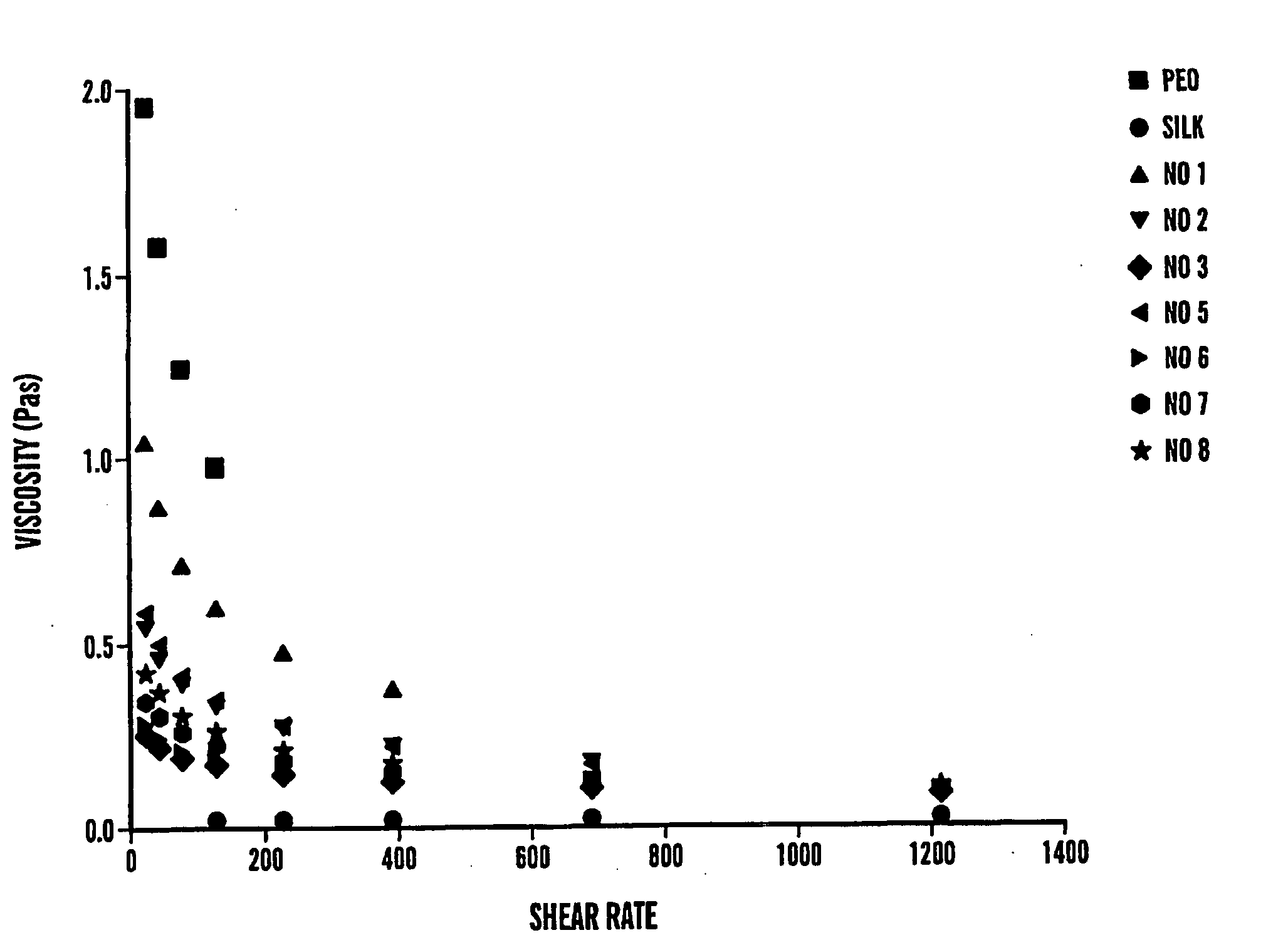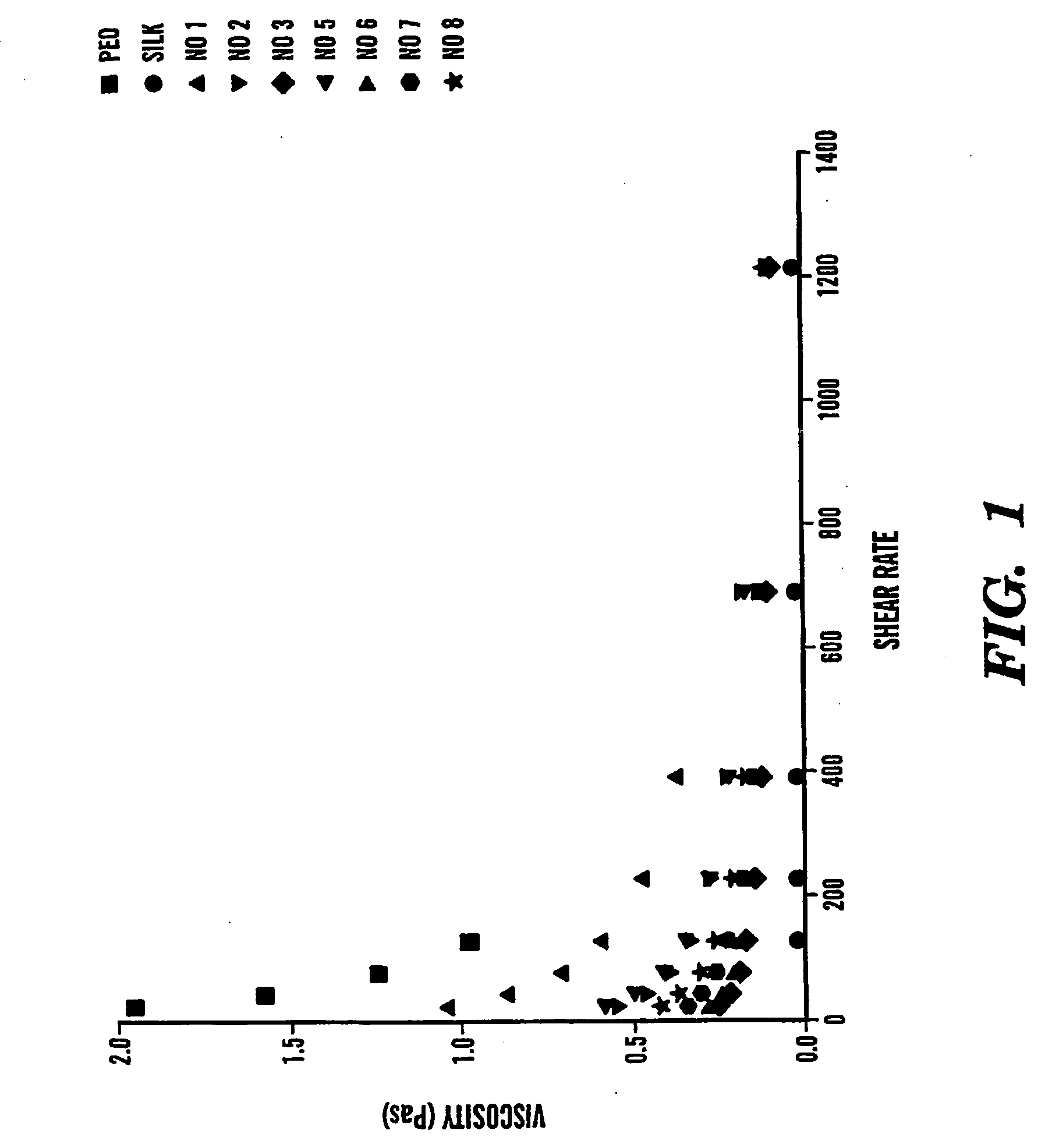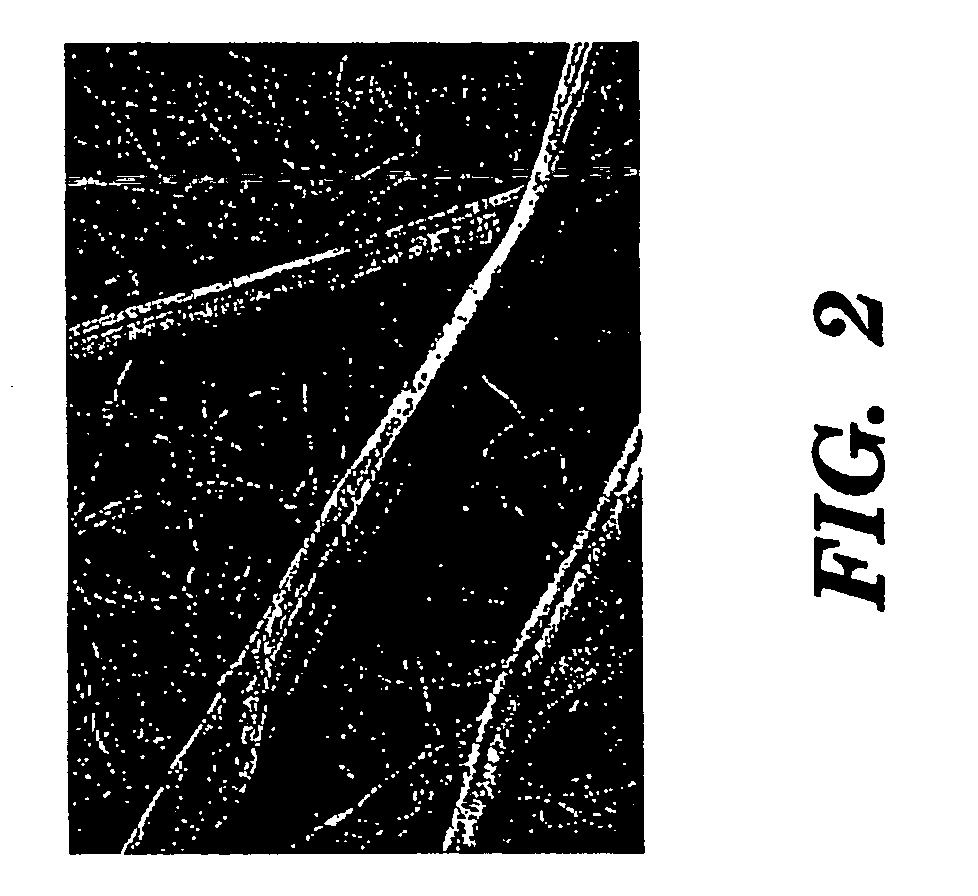Silk biomaterials and methods of use thereof
- Summary
- Abstract
- Description
- Claims
- Application Information
AI Technical Summary
Benefits of technology
Problems solved by technology
Method used
Image
Examples
example i
Materials
[0069] Cocoons of B. mori silkworm silk supplied by Institute of Sericulture, Tsukuba, Japan. PEO with an average molecular weight of 4×105 g / mol and 9×105 g / mol (Aldrich) were used in blending.
Preparation of Regenerated B. mori Silk Fibroin Solutions
[0070]B. mori silk fibroin was prepared as follows as a modification of our earlier procedure [25]. Cocoons were boiled for 30 min in an aqueous solution of 0.02 M Na2CO3, then rinsed thoroughly with water to extract the glue-like sericin proteins. The extracted silk was then dissolved in 12 M LiBr solution at 60° C. yielding a 20% (w / v) solution. This solution was dialyzed in water using a Slide-a-Lyzer dialysis cassette (Pierce, MWCO 2000). The final concentration of aqueous silk solution was 3.0 to 7.2 wt %, which was determined by weighing the remaining solid after drying. HFIP silk solution (1.5 wt %) was prepared by dissolving the silk fibroin produced after lyophilizing the aqueous silk solution into the HFIP.
Prep...
example ii
Materials
[0084] Cocoons of B. mori silkworm silk were obtained from M Tsukada, Institute of Sericulture, Tsukuba, Japan. PEO with an average molecular weight of 9×105 g / mol and polyethylene glycol (PEG) (3,400 g / mol) were purchased from Aldrich and used without further purification.
Preparation of Regenerated B. mori Silk Fibroin Solutions
[0085]B. mori silk fibroin solutions were prepared by modifying the procedure described earlier [25]. Cocoons were boiled for 30 min in an aqueous solution of 0.02 M Na2CO3, then rinsed thoroughly with water to extract the glue-like sericin proteins. The extracted silk was then dissolved in 9.3 M LiBr solution at room temperature yielding a 20 wt % solution. This solution was dialyzed in water using a Slide-a-Lyzer dialysis cassette (Pierce, MWCO 2000) for 48 hrs. The final concentration of aqueous silk solution was 7.0 to 8.0 wt %, which was determined by weighing the remaining solid after drying.
Preparation and Treatment of Blend Films
[008...
example iii
Methods
[0101] Cocoons of B. mori silkworm silk were kindly supplied by M. Tsukada, Institute of Sericulture, Tsukuba, Japan. PEO with an average molecular weight of 9×105 g / mol (Aldrich) was used in the blends.
Preparation of Silk Matrices and Regenerated B. Mori Silk Fibroin Solutions
[0102] To prepare the silk matrices for cell seeding experiments, white Brazilian raw Bombyx mori silkworm fibers were extracted for 1 hour at 90° C. in an aqueous solution of 0.02 M Na2 CO3 and 0.3% (w / v) detergent as previously described [33] to remove sericin, the antigenic glue-like proteins that encapsulate the fibroin fibers following secretion from the silkworm. A 3-cm long silk wire-rope matrices consisting of 540 silk fibers (pre-extraction) were generated for use in this study by crimping ends with stainless steel 316L collars (1 cm in length, 2.2 mm I.D, 3 mm O.D.).
[0103] Regenerated B. mori silk fibroin solutions was prepared as a modification of our earlier procedure. Cocoons were boi...
PUM
| Property | Measurement | Unit |
|---|---|---|
| Fraction | aaaaa | aaaaa |
| Fraction | aaaaa | aaaaa |
| Percent by mass | aaaaa | aaaaa |
Abstract
Description
Claims
Application Information
 Login to View More
Login to View More - R&D
- Intellectual Property
- Life Sciences
- Materials
- Tech Scout
- Unparalleled Data Quality
- Higher Quality Content
- 60% Fewer Hallucinations
Browse by: Latest US Patents, China's latest patents, Technical Efficacy Thesaurus, Application Domain, Technology Topic, Popular Technical Reports.
© 2025 PatSnap. All rights reserved.Legal|Privacy policy|Modern Slavery Act Transparency Statement|Sitemap|About US| Contact US: help@patsnap.com



